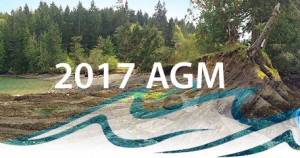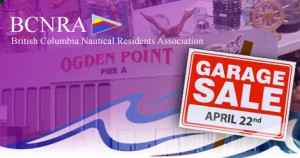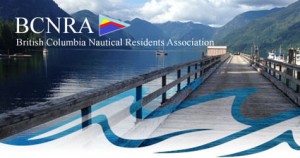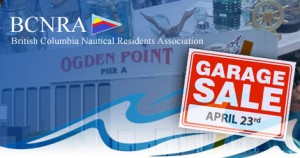November 12, 2015
Ladysmith Chronicle
Box 400, 940 Oyster Bay Drive
Ladysmith, BC V9G 1A3
Re: Anchored Boats in Ladysmith Harbour
Dear Opinion Page Editor:
The BC Nautical Residents Association (BCNRA) was founded in 2010 by a group of liveaboard boaters to encourage living aboard responsibly and to find solutions to issues faced by people who live on the water. The BCNR’s mission statement is to:
- Preserve and support the tradition of living aboard one’s vessel;
- Promote environmental awareness among liveaboards;
- Establish effective communications and resolve issues of concern to liveaboards;
- Serve as a voice for liveaboards regarding activities that affect BC waterways.
Several of BCNRA’s members live aboard their boats in ‘Dog Patch’. Some have been there for years. They are citizens: they shop, work, volunteer, and vote in Ladysmith and the environs. Some of Ladysmith’s liveaboards at one point made a conscious decision to live a nautical lifestyle, while others may have fallen into it through any number of life’s challenges. They are like many of Ladysmith’s land-based residents – a mix of family composition, with a range of ages, economic resources, educational backgrounds, interests, political viewpoints, and hobbies. Like most Canadians, they just want to live and let live.
Some shore-side residents object to seeing boats at anchor, stating that they are ‘derelicts’ and/or not paying their fair share. Some of the boats may be unsightly, but if they are floating high on their waterlines and are being monitored by their owners, they are not derelicts. There are houses in our coastal communities that will never make it into Better Homes and Gardens but no one is demanding they be eliminated. Why should boats at anchor be banished? Buildings must conform to maintenance bylaws. Why not boats? Land-based residents must pay for services such as water, garbage, fire, and police protection. Why not set up a system for liveaboards to pay for the services they use?
Liveaboard vessels by definition are not derelicts. Derelict “… generally means vessel or cargo which has been abandoned and deserted at sea by those who were in charge of it without any hope of recovering it.” [BC Ministry of Forests, Lands and Natural Resource Operations’ Technical Staff Guide on Problem Vessels] The question of liveaboards in Dog Patch should not be conflated with the issue of the Vicki Lynne.
During the last parliamentary session, the then-M.P. for Nanaimo, Jean Crowder, introduced a private member’s bill, C-638, regarding a process to clean up derelict vessels along Canada’s coastlines. Regrettably, the previous government defeated the bill. While the majority of boat owners are responsible maintainers of their vessels, sometimes boats become wrecks or derelicts through accident, neglect, or abandonment. The Coast Guard has the expertise, and should have the adequate resources, to dispose of wrecks and derelicts in an environmentally sustainable way.
Our Association supports the introduction of an annual decal program, similar to that of Washington State. In Washington, an annual decal costs approximately $28US and the proceeds go to marine enhancements, including the removal of derelict and abandoned vessels. A Canadian Coast Guard staff person once told a BCNRA director that if the Coast Guard had $2/boat/year, there would be no problem in removing wrecks.
The BCNRA encourages Canadians to write to Hunter Tootoo, Minister of Fisheries and Oceans and the Canadian Coast Guard (hunter.tootoo@parl.gc.ca), requesting that he introduce legislation to adequately fund the Canadian Coast Guard to deal with derelict and abandoned vessels.
Finally, the BC Nautical Residents Association is encouraged to learn that the municipality has struck a working group, comprising various levels of government, the local First Nations, and stakeholders, including boaters at anchor, to arrive at a mutually satisfactory solution to whatever issues have been identified.
Thank you.
Rick Schnurr, Director
Bill Sassaman, Director
BC Nautical Residents Association
Note: the published version of this letter was abbreviated due to word count constraints. It communicates the same message with less detail.
 Dear Members
Dear Members
 BCNRA will have a table at the Massive Marine Garage Sale this year, raising funds and awareness for our Association! We are always pleasantly surprised by our membership’s generous donations. If you have anything to contribute, please respond to our broadcast email or
BCNRA will have a table at the Massive Marine Garage Sale this year, raising funds and awareness for our Association! We are always pleasantly surprised by our membership’s generous donations. If you have anything to contribute, please respond to our broadcast email or 
 As some of you may know, the BCNRA table at the Massive Marine Garage Sale has continued to be a huge success each year, raising funds and awareness for our Association! We are always pleasantly surprised by our membership’s generous donations. This year, if you have anything to contribute, please respond to our broadcast email or
As some of you may know, the BCNRA table at the Massive Marine Garage Sale has continued to be a huge success each year, raising funds and awareness for our Association! We are always pleasantly surprised by our membership’s generous donations. This year, if you have anything to contribute, please respond to our broadcast email or